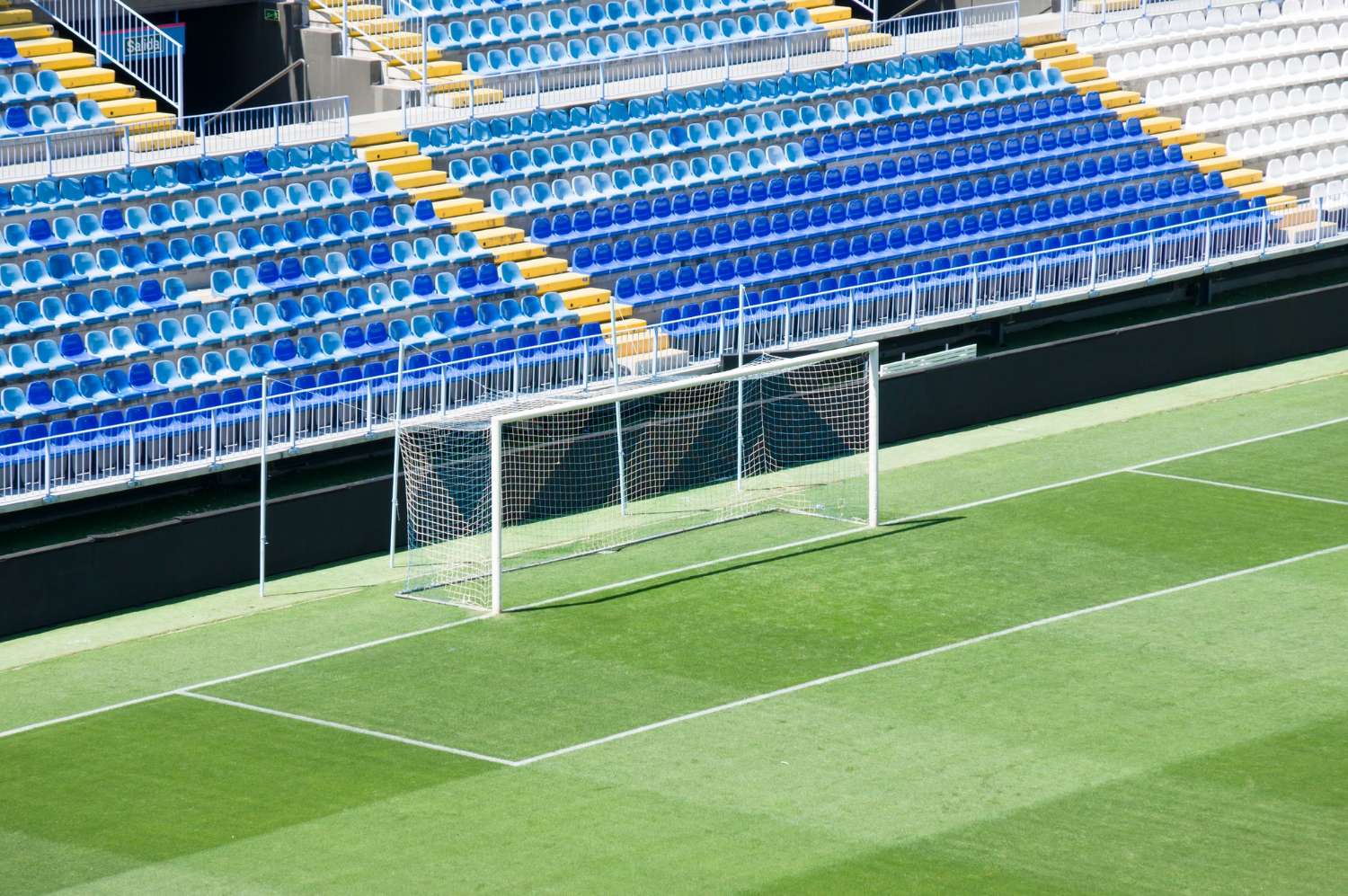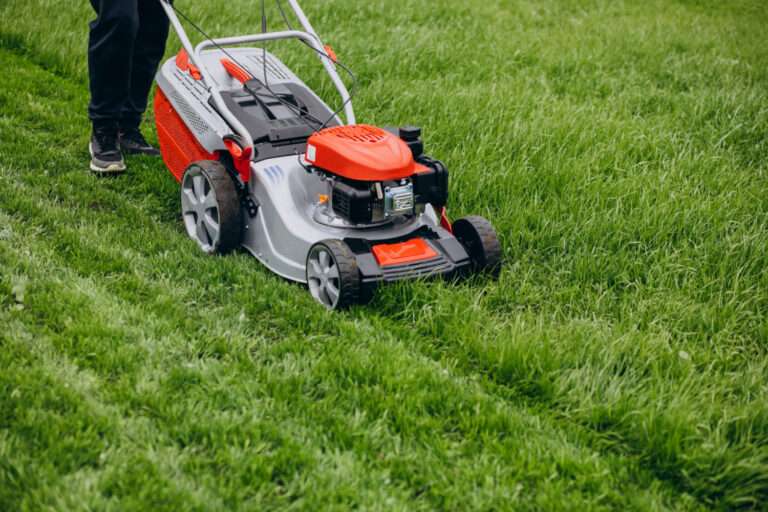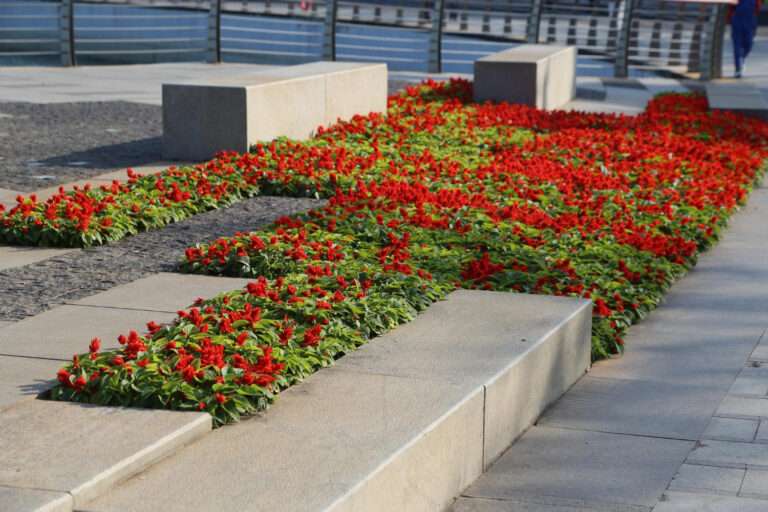Optimising Mowing Patterns for Professional Sports Fields: The Subtle Art of Striping and Direction
There’s something oddly satisfying about a freshly cut pitch. Those clean alternating stripes, the subtle shimmer as the sun hits the grass – it’s pure theatre. But for groundskeepers, mowing patterns aren’t just for show. They’re a tool. A form of quiet control over how the turf grows, how it breathes, even how it plays.
The best sports surfaces don’t happen by chance. Every pass of the mower, every turn at the touchline, is calculated. Because mowing direction and pattern don’t just influence aesthetics – they affect the turf’s density, health, and how the ball behaves.
Optimising mowing patterns isn’t about fancy stripes for the cameras. It’s about science, surface quality, and smart maintenance planning.
The Illusion of Stripes
Let’s clear one thing up first. The stripes you see on a football pitch aren’t created by different lengths of grass. They’re simply light reflecting off blades that have been bent in opposite directions. One stripe is the grass leaning towards you (darker), the next leans away (lighter).
That’s why direction matters. The more uniform the bend, the sharper the contrast. Groundskeepers use rollers behind the mower to lay the grass neatly in each pass. It’s almost like combing hair – neat lines show care and precision.
In the Premier League, those immaculate patterns are sometimes more famous than the teams themselves. But while television loves the visuals, turf managers focus on what the eye can’t see – the effect those directions have on growth and wear.
Directional Mowing – More Than Just Looks
Always mowing in the same direction might be tempting. It’s quick, predictable, and efficient. But it also trains the grass to lean permanently one way. You’ll notice weaker growth on the laid-down side, with the opposite edge growing upright and coarse.
In my experience, that imbalance soon turns into patchy colour, uneven play, and slower drainage. The fix? Alternate directions.
By varying mowing direction – north-south one week, east-west the next – you encourage upright growth. The grass strengthens at the base, and the sward (that’s the technical term for the grass canopy) stays denser and more even. You also reduce soil compaction, because wheel tracks don’t build up in the same channels week after week.
Here’s a simple breakdown of how rotation helps:
| Pattern Approach | Benefit | Example Frequency |
|---|---|---|
| Alternating Directions | Encourages upright growth, reduces compaction | Change direction weekly |
| Diagonal or Criss-Cross | Enhances presentation, disperses wear | Every 2–3 cuts |
| Circular/Spiral | Ideal for stadium pitches with heavy centre wear | Occasional, every 5–6 cuts |
| Straight (Single Direction) | Quick but stressful for turf | Only when necessary for events |
It’s not about showing off. It’s about letting the grass recover evenly and keeping root strength consistent across the field.
Striping Techniques and Machinery
The best striping doesn’t come from mowing shorter – it comes from the right equipment and technique.
Cylinder mowers, for instance, produce the sharpest lines because they cut cleanly and roll the grass simultaneously. Rotary mowers can achieve a decent effect too, especially when fitted with rear rollers. The trick is consistent overlap and pressure – too much, and you flatten the grass excessively; too little, and you lose the contrast.
Speed also affects the pattern. Too fast and the roller bounces, leaving wobbly lines. Too slow and you risk scuffing the turf on turns. The pros know exactly how to adjust their speed, roller weight, and overlap ratio to get that flawless finish.
There’s even debate about whether to stripe diagonally across goal areas or run parallel to them. Personally, I prefer diagonals – they disperse foot traffic better and reduce visible wear.
How Patterns Influence Turf Health
This is where the science meets the art. The direction of mowing influences sunlight exposure, airflow, and even pest behaviour. Grass bent repeatedly the same way traps moisture on one side, creating ideal conditions for fungal disease. Alternate directions help the canopy dry evenly.
It also affects photosynthesis. Blades lying flat capture less light than those standing upright. Over time, this imbalance weakens turf in shaded or high-traffic zones. Alternating the mowing direction keeps things balanced – the grass grows upright, stronger, and more tolerant to wear.
Regular pattern rotation can even minimise weeds. A dense, upright sward shades the soil surface, reducing the space for unwanted species like annual meadow grass to germinate. You’re essentially outcompeting them through clever mowing.
The Psychology of Patterns
There’s another side to this – the human side. Players and spectators associate stripes with professionalism. Even at grassroots level, a neatly striped pitch lifts the whole experience. Players say it feels faster, smoother, more “official”.
And they’re not wrong. A well-striped pitch often is better. Because to create those crisp lines, the grounds team has already done the hard work – rolling, levelling, adjusting height, managing soil moisture. Stripes are the by-product of good practice.
That said, I’ve seen matches played on perfectly maintained but unstriped fields that still outperformed showpiece venues. So, while patterns impress the eye, the true sign of quality is consistency underfoot.
Avoiding Damage During Patterning
Every groundskeeper knows the dread of “turning damage”. Those tight end-of-line pivots that leave half-moons of worn turf near the touchlines. It happens when operators turn too sharply, especially with heavy ride-on mowers.
The solution is deceptively simple – slow down, widen the turning arc, and alternate start and finish points. That way, you don’t repeatedly stress the same patches. Some professionals even use turning boards or temporary mats in high-wear zones to protect the surface.
If you’re striping diagonally or using intricate checker patterns, make sure your machine setup supports even roller contact. Poor alignment can cause “ghosting” – faint parallel lines that spoil the overall finish.
Balancing Aesthetics and Function
It’s easy to get caught up in the artistry. But professional turf management is always about performance first. Fancy patterns mean nothing if the ball bobbles or the grass tears under pressure.
I find the best compromise is to keep base patterns simple – straight or diagonal stripes – and introduce variation only when the turf can handle it. Complex patterns like circles or diamonds are best left for pre-season, when wear is low and recovery time is generous.
If you’ve got multiple pitches, rotate which field gets the “show” pattern. That way, no one surface bears the brunt of presentation cutting every week.
Mowing Patterns and Play Quality
You can feel the difference between a well-patterned, evenly cut pitch and one that’s neglected. Ball roll changes subtly depending on grass direction – smoother with the lay, slightly resisted against it. That’s why alternating stripes across the width of a football pitch provide balance; the ball never consistently favours one direction.
In cricket, outfield mowing direction affects boundary speed. Golf fairways rely on patterning to influence both shot perception and roll distance. Even rugby fields, though less fussy about stripes, benefit from alternating directions to improve footing and recovery.
At elite level, pattern choice can even become tactical. Some groundskeepers coordinate with teams to adjust striping based on playing style – shorter passes or long balls, for example.
Pattern Planning Across the Seasons
Grass growth changes with temperature, rainfall, and day length, so pattern management has to adapt too.
- Spring: Focus on stimulating growth and levelling wear. Keep stripes lighter – avoid heavy roller pressure on soft soil.
- Summer: Go for definition. Strong sunlight helps patterns pop, but watch for heat stress. Alternate direction regularly to reduce leaf scorch.
- Autumn: Switch to diagonal or cross-hatch to disguise wear patches and improve drainage visibility.
- Winter: Prioritise function over appearance. Minimal striping, light roller contact, and careful turns to prevent rutting.
A good mower operator knows that pattern planning is part of seasonal turf care, not just an aesthetic afterthought.
Integrating Patterns Into Broader Maintenance
Mowing direction ties into aeration lines, drainage layout, and even irrigation coverage. If you’re constantly rolling in the same direction as your drains, you’ll compact the soil along those channels. Alternating your mowing angle spreads the pressure more evenly.
It’s also worth coordinating pattern changes with fertilisation and topdressing schedules. You’ll see more uniform uptake and less streaking. It all connects.
For more on how mowing fits within wider turf management practices, see our page on sports field mowing.
Pattern Innovation – Technology Meets Tradition
Modern turf management now leans on GPS-guided mowers that remember lines to millimetre precision. Some robotic systems can replicate complex patterns automatically, freeing staff to focus on soil health.
But technology can’t replace experience. The eye of a seasoned groundskeeper – knowing when a line “feels” straight, when the grass is too soft for rolling – still wins the day. Machines can mimic, but they can’t intuit.
And there’s something quietly satisfying about doing it the old-fashioned way – a steady hand, a keen eye, and a mower that hums instead of beeps.
In Summary
Mowing patterns are part art, part agronomy. Yes, they make pitches look stunning. But more importantly, they help manage turf health, distribute wear, and balance play quality.
Change direction. Watch your turns. Respect the grass. And remember that behind every perfect stripe is a hundred small decisions – from blade sharpness to soil moisture – all made in the name of consistency.
Because in the end, good striping is just a sign of great turf care.
Killingley Insights is the editorial voice of NT Killingley Ltd, drawing on decades of experience in landscaping, environmental enhancements, and civil engineering projects across the UK.








